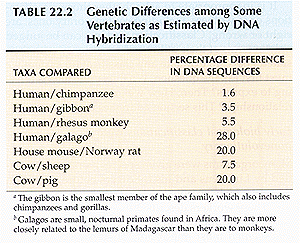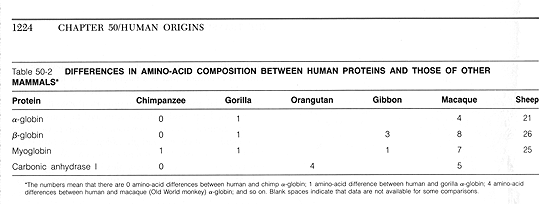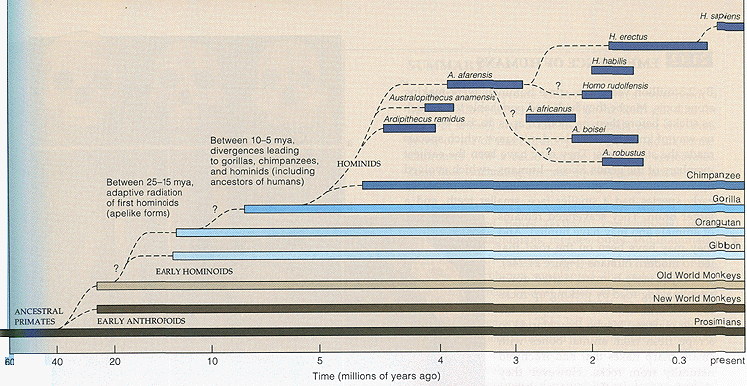

Fact: Remains of different Australopithecus species dated back to 4.5 - 1.5 million years ago.
The oldest hominid was Ardipithecus ramidus (earlier calledAustralopithecus ramidus), which lived years ago.
A more advanced hominid, Australopithecus anamensis lived years ago.
The most widely accepted model of human evolution regards Australopithecus afarensis as the common ancestor of other Australopithecus species (A. africanus, A. robustus, A. boisei) and early humans.
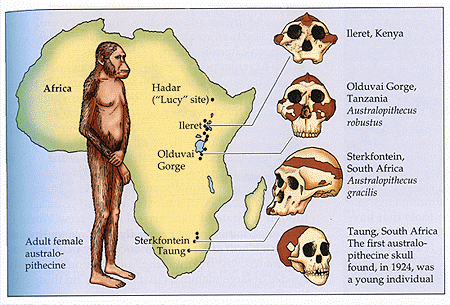
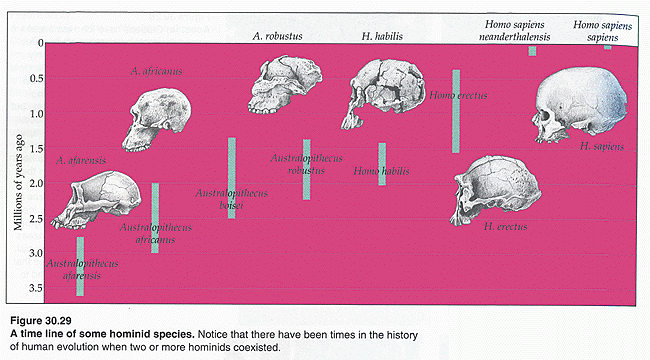
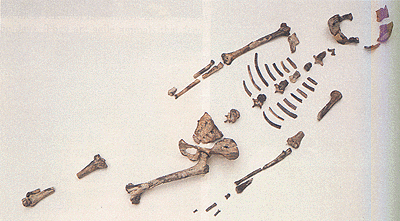
Australopithecus afarensis, or as it became known, "Lucy", from Hadar, Ethiopia.
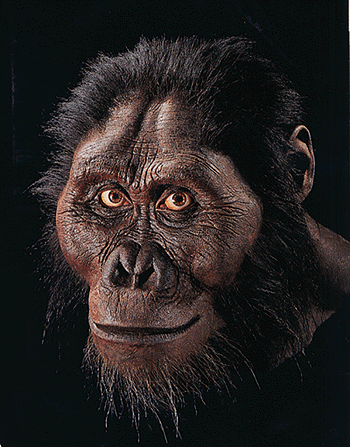
Reconstructed male A. afarensis based on a skull found at Hadar, Ethiopia.
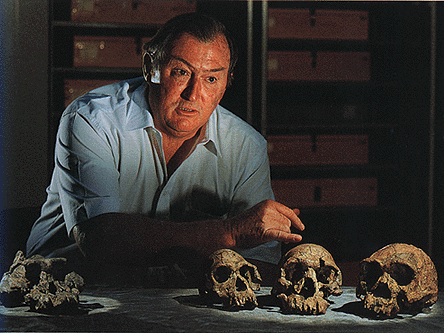
Richard Leakey with some of his findings.
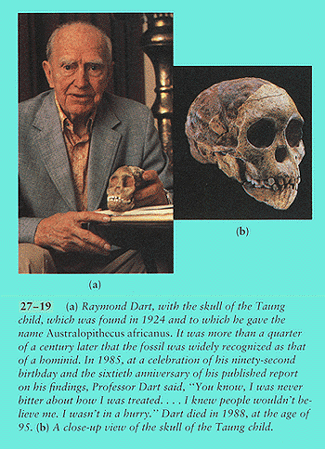
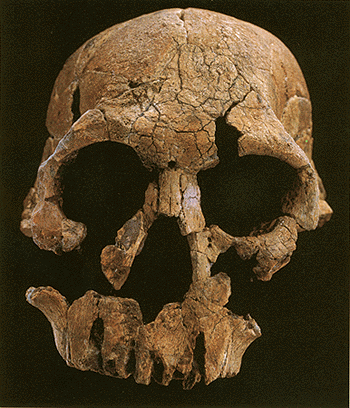
Skull of the Homo habilis 1470. 1.9 million years old.
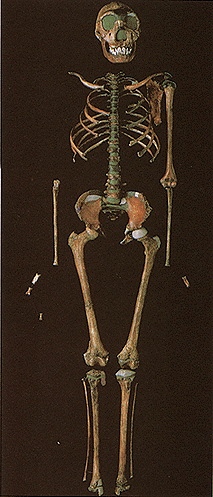
The skeleton of a young (appr. 12 years old) Homo erectus, the "Turkana boy".

Skullcap of Homo erectus from Ceprano, Italy. Approximately 800,000 - 900,000 years old.
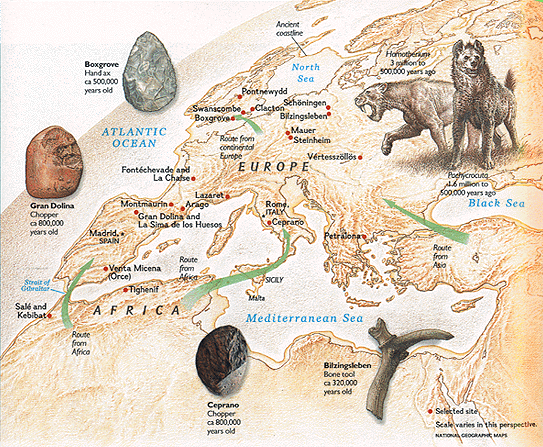
The migration and distribution of H. erectus in Europe. Dots indicate archeological sites.
Fact: H. erectus spread out of Africa to Europe and Asia. Remains of this species date back to 1.8 million to 300,000 years ago.
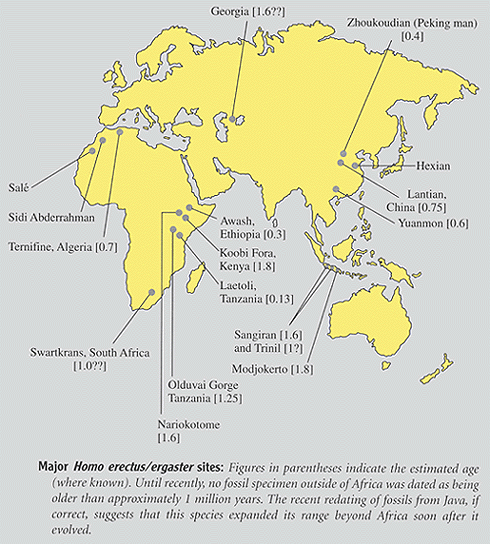
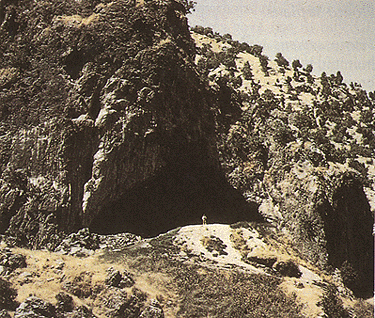
This cave near Shanidar, northern Iraq, was inhabited by humans for almost 100,000 years.
Fact: The Neandertal men (H. sapiens neanderthalensis) lived between 150,000 - 30,000 years ago.
Fact: Modern humans (H. sapiens sapiens) evolved about 50,000-35,000 years ago.
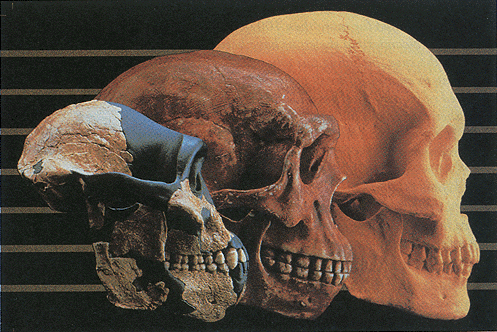
The brain size in the Hominid lineage from Australopithecus to Homo increased dramatically from about 500 to 1350 cubic centimeters.
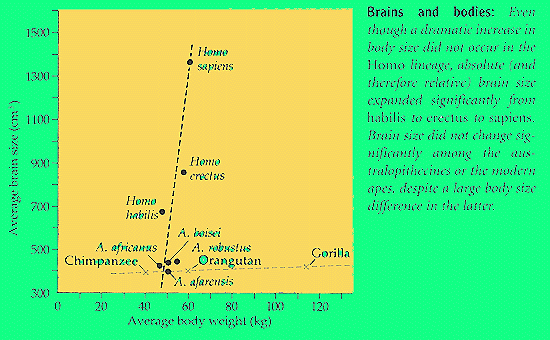
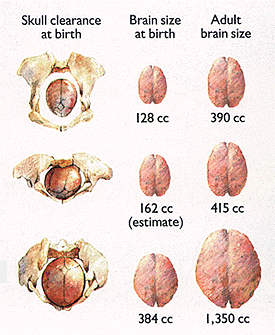
Sizes of the brain and skull of the chimpanzee (top), Australopithecus afarensis (middle), and modern humans (bottom).
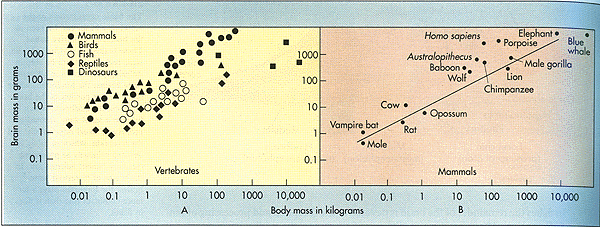
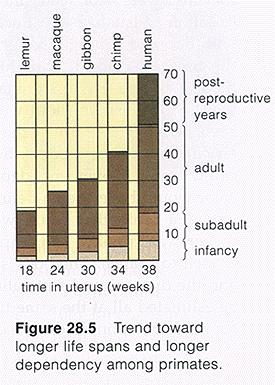
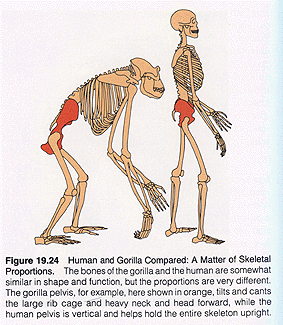
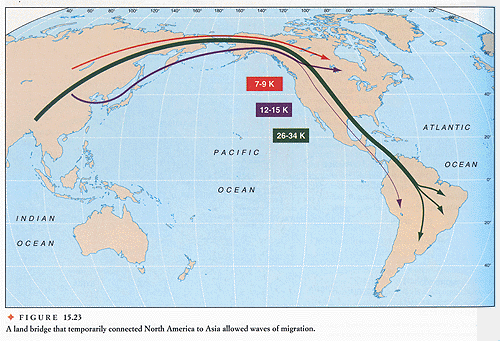
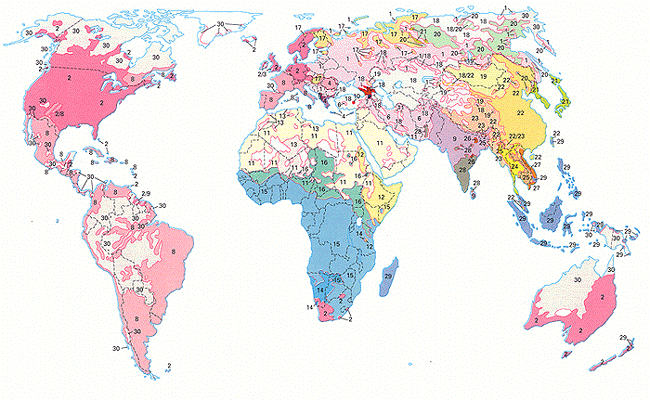
Diversification of languages parallels strikingly the evolutionary process, although the underlying processes are different. Languages, like new species, arose in isolation accumulating more and more differences over time.
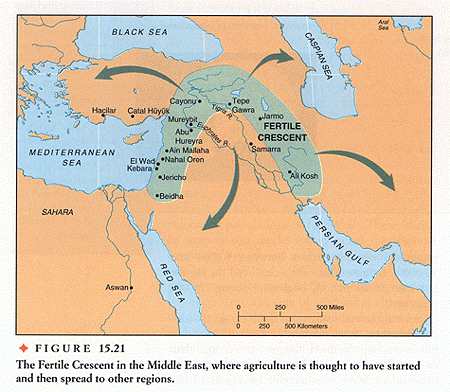
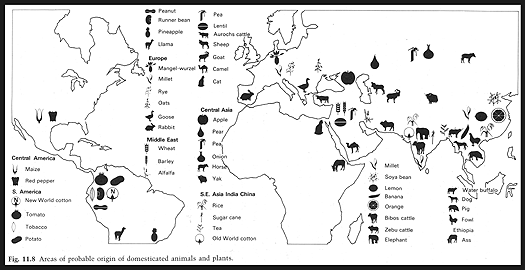
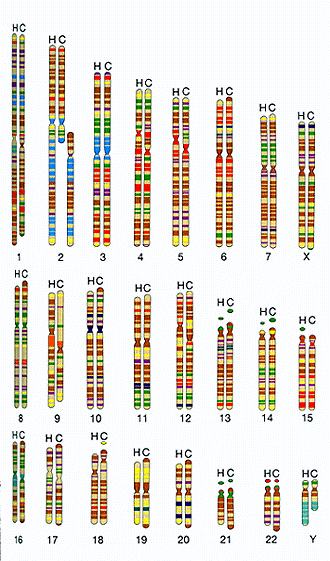
Similarities between the chromosomes of the human (left) and the chimpanzee (right). Note that the existing difference in chromosome number between these species (46 vs. 48) is the result of the fusion of the chimpanzee chromosomes #2 and #3.
